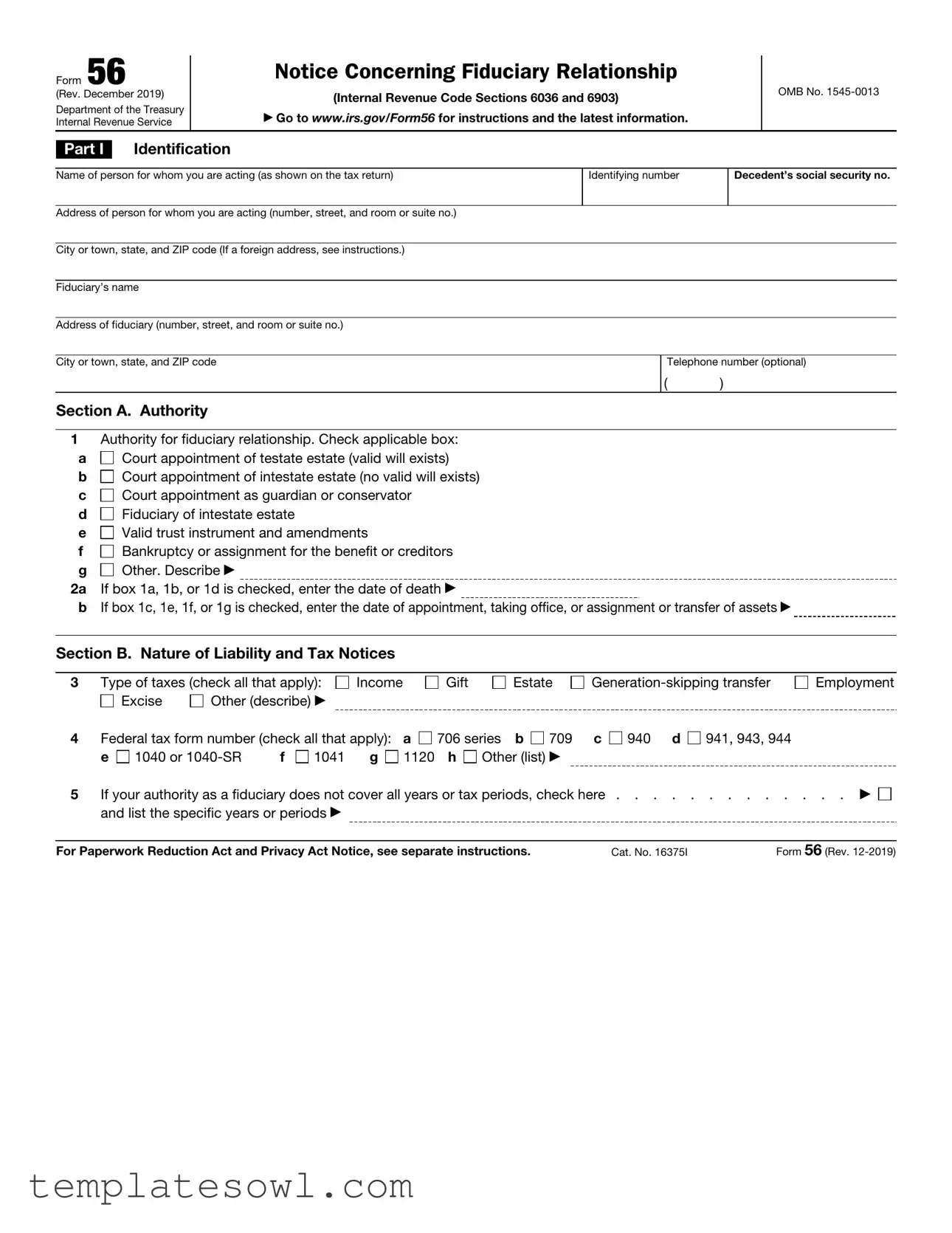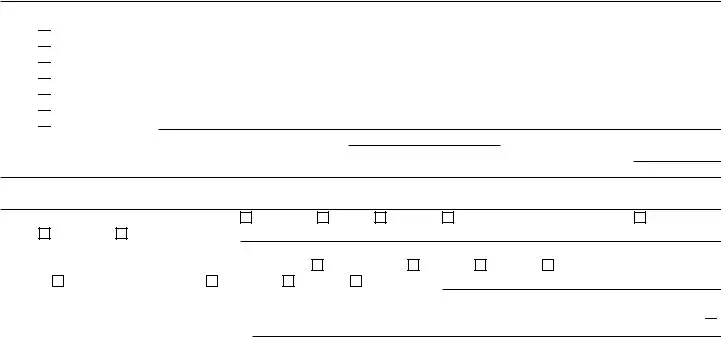What is Form 56, and when should it be used?
Form 56, officially known as the Notice Concerning Fiduciary Relationship, is a document used to inform the IRS of a fiduciary relationship. If someone passes away, or if a trust is established, a fiduciary—like an executor or trustee—must manage the relevant taxes. This form helps ensure that the IRS knows who is responsible for handling tax matters for the deceased person or the trust. It can be used in various situations, including estates, guardianships, and trusts.
Who qualifies as a fiduciary, and what roles do they play?
A fiduciary is an individual or entity tasked with managing someone else's assets or interests. Common examples include executors of estates, guardians appointed by a court, or trustees managing a trust. The fiduciary has a legal duty to act in the best interest of the beneficiary, which can involve filing taxes, settling debts, or distributing assets according to a will or trust document.
What types of taxes can be reported on Form 56?
Form 56 is versatile when it comes to tax liabilities. It can cover a variety of taxes, including income, gift, estate, and generation-skipping transfer taxes. If you check the box for "Other," you should specify the types of taxes relevant to your situation. This helps the IRS understand which tax matters the fiduciary is responsible for managing.
Is there a deadline for submitting Form 56?
While there isn’t a strict deadline for filing Form 56, it is strongly advised to submit it as soon as you assume your role as a fiduciary. Timely filing allows the IRS to update their records and facilitates smoother tax management for the estate or trust. Each situation may vary, so it’s wise to consult with a tax professional to ensure compliance.
How can a fiduciary terminate their relationship, and what does that require?
A fiduciary can terminate their relationship with the estate, trust, or guardianship through Form 56 by indicating their intent to revoke any previous notices with the IRS. You would check the appropriate box on the form to signal a total or partial termination of the fiduciary responsibilities. Additionally, providing a reason—such as a court order or a dissolution certificate—will help clarify the termination for the IRS.
What happens if a new fiduciary is appointed?
If a new fiduciary is appointed, the outgoing fiduciary should file Form 56 to notify the IRS of this change. This step ensures that the IRS records reflect the correct person managing the estate or trust. The new fiduciary can then take responsibility for the tax matters going forward. Providing the new fiduciary’s contact details on the form is essential for maintaining clear communication with the IRS.


 Court appointment of testate estate (valid will exists)
Court appointment of testate estate (valid will exists) Court appointment of intestate estate (no valid will exists)
Court appointment of intestate estate (no valid will exists) Court appointment as guardian or conservator
Court appointment as guardian or conservator Fiduciary of intestate estate
Fiduciary of intestate estate Valid trust instrument and amendments
Valid trust instrument and amendments Bankruptcy or assignment for the benefit or creditors
Bankruptcy or assignment for the benefit or creditors Other. Describe
Other. Describe 
 and list the specific years or periods
and list the specific years or periods 

 Court order revoking fiduciary authority
Court order revoking fiduciary authority
